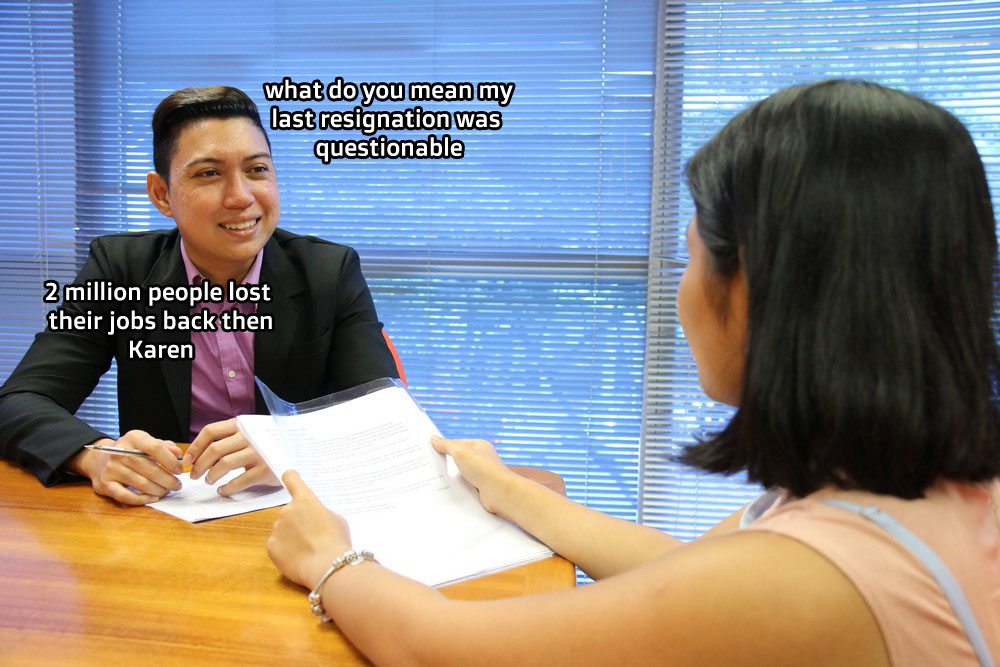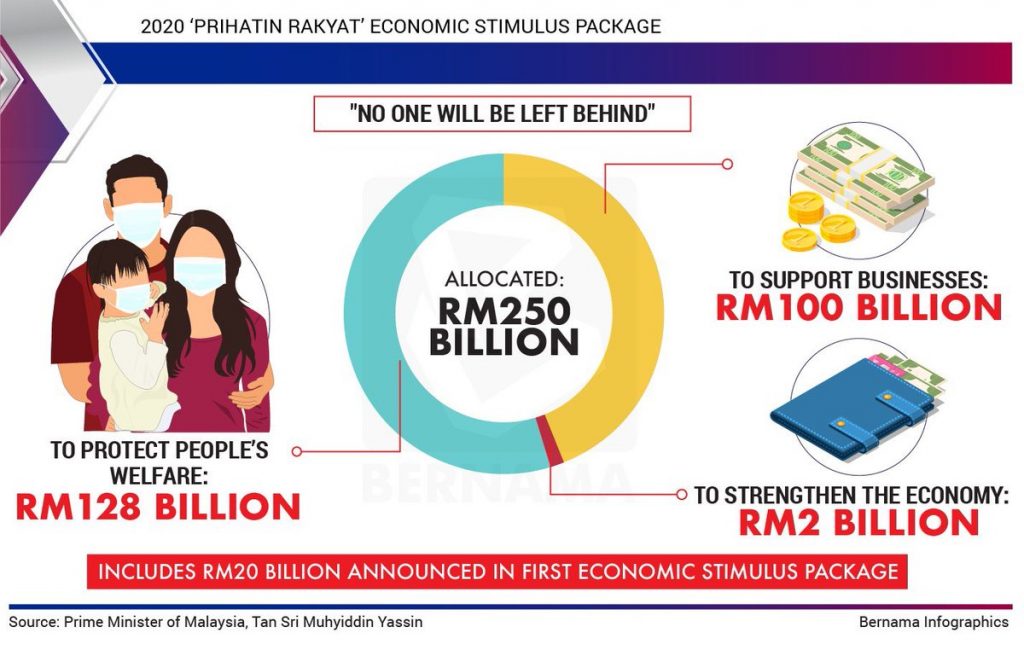Between 1 and 2 million Malaysians may be unemployed this year. Here’s why.

- 462Shares
- Facebook430
- Twitter4
- LinkedIn4
- Email8
- WhatsApp16
Despite 2020 being forecast as a ‘strong, prosperous and lucky‘ year, it seems that the white metal rat is not immune to the coronavirus. As we’re all aware, we’ve been under the Movement Control Order (MCO) for over 50 days already, and putting aside face mask and sanitizer sellers, a lot of other Malaysians are seeing their prosperity disappear like a certain burger after CNY.

While we did manage to avoid overcrowding our hospitals with coronavirus cases through the MCO, it came at a pretty heavy price. According to Prime Minister Muhyiddin Yassin, that price is about RM2.4 billion for every day the MCO is in effect.
“I would like to stress that our country has lost around 2.4 billion ringgit per day. To date, the total loss is estimated at about 63 billion ringgit, and if the movement order is extended by another month, we stand to lose another 35 billion ringgit.” – Muhyiddin Yassin, as reported by Nikkei Asian Review.
In light of that, the government had partially re-opened the economy through a conditional MCO earlier this month. However, despite ominous phrases like ‘shrinking GDP‘ or ‘worst recession in history‘ appearing in news headlines, the decision to re-open the economy had been unpopular with some quarters, with people drawing up a petition to oppose it and friction building up between the federal government and the states.
So maybe the economic talk doesn’t seem too important compared to human lives at first, until you look at the consequences. Because as recent statistics have shown…
The MCO have caused unemployment to jump over financial crisis levels

Recently, it was reported that the unemployment rate jumped to 3.9% in March, the highest it has been since June 2017. While it doesn’t really compare to our record of 7.4% in 1986, 3.9% is a lot of people without jobs, translating to about 610,500 people. This rate is higher than during the last two financial crises we’ve went through, according to Marzunisham Omar, BNM’s assistant governor.
“In comparison, during the global financial crisis, our unemployment rate was at 3.7% in 2009, while during the Asian financial crisis in 1998, the unemployment rate was at 3.2%,” – Marzunisham Omar, as reported by the Edge Markets.
To be fair, it’s not a Malaysian problem alone. For the Asia Pacific region, the International Labor Organization had estimated that 7.2% of working hours will be wiped out between April and June this year, which translates to roughly 125 million full-time jobs disappearing. Singapore, Hong Kong, and Japan, among others, have been breaking unemployment records in March as well, reporting 2.4%, 3.7% and 2.5% unemployment respectively.
But getting back to Malaysia, it seems that the reason for the spike was the MCO, and it’s not hard to see why. For own account workers, i.e. people who work for themselves like small traders, enterpreneurs, and freelancers, the restrictions of the MCO may make it hard or impossible for them to work, leading to joblessness. For people who work for other people, well, business is struggling.

Malaysia’s Department of Statistics (DOSM) ran an unofficial survey among Malaysian businesses recently, and according to that survey, roughly two-thirds of Malaysian businesses reported having no income throughout the MCO. Their biggest concerns during this period was paying their staff, getting no business from clients, and having to pay rent. Under such conditions, some businesses may downsize to survive, or shut down completely. Both lead to joblessness.
But now that the MCO had been replaced with a conditional MCO that allows almost all businesses to re-open, things should be fine, right? Well, actually, unemployment may be here to stay for a bit longer, and…
The least optimistic estimate predicted unemployment to reach 13%

In April, the Bank Negara (BNM) had estimated that unemployment will rise a bit more to 4%, or roughly 629,000 people in 2020 due to the pandemic. On the other hand, the Malaysian Employers Federation (MEF) had estimated a whopping 13% unemployment rate to come, or about 2 million people going jobless. According to Datuk Shamsuddin Bardan, MEF’s executive director, their estimate includes those entering the job market as well.
“It’s (BNM’s estimate) quite optimistic. I don’t think we’re able to actually stay at 4%, now that we have 500,000 who are unemployed. There is perhaps another 500,000 more joining the labour market as new entrants. And we have yet to include those who would likely be retrenched,” – Datuk Shamsuddin Bardan, as reported by the Star.
Taking into account the oil price crash, the Malaysian Institute of Economic Research (MIER) had predicted in March that further extensions of the MCO may translate to some 2.4 million people losing their jobs. These are worrying figures, and although MIER’s estimate counted on the MCO being continued as one of its bases, we can’t say for sure if the other two estimates still apply. But all these estimates might not be too far-fetched, as far as we can tell.
Economists from Japan’s brokerage company Nomura had stated that easing lockdowns might help reduce unemployment somewhat, but the damage from the lockdown will stay around for a while, keeping unemployment higher than pre-Covid levels. In simpler but less accurate words, because of lockdowns the economy went bad, so people generally don’t have as much money to spend, which makes it hard for the economy to recover, which makes it harder to keep/get jobs than before.

For a local example of this post MCO reaction, we can look at jobs in higher learning institutions. Private universities and colleges rely heavily on tuition and fees to exist. However, a report by the Penang Institute theorized that potential students may hold off on higher education until their parents’ finances improve, and foreign students may not be able to come in because of border controls.
While not as obviously affected by the pandemic like hotels or travel companies, these institutions, many of which were already in the red before the coronavirus hit, can’t survive without students, so some of their staff may face unemployment. With such glum predictions in mind, one might wonder…
How will the government address this problem?

Actually, they kinda already did. Sometime in March, the government launched a thing called the Prihatin Rakyat economic stimulus package. Through this package, the government had allocated some RM250 billion to achieve three goals: protecting the rakyat, supporting businesses and reinforcing the economy. Of interest to the unemployment situation are two initiatives under this package: the wage subsidy programme and the employment retention programme.
Basically, the wage subsidy programme works by helping companies pay part of their staff’s salaries, with the amount subsidized depending on how many people the company hires. For example, a company that hired less than 75 companies will get back RM1,200 per staff kept, and companies with more than 200 people will get RM600 for each worker. This subsidy is only applicable for local staff earning under RM4,000 a month, and it’s supposed to last for three months.
Besides helping businesses pay their staff, it also protects the staff somewhat: in return for the aid, companies will have to keep each staff under the program for an additional three months after the subsidy ended, securing their jobs for at least six months. In that period, the participating workers will also be protected from having to take unpaid leaves, pay cuts, or annual leave deductions. As of May 7, about 2.24 million workers have applied for this scheme.

The employee retention programme, on the other hand, is for workers earning under RM4,000 a month who have agreed with their employers to take unpaid leave. For up to six months of unpaid leave, eligible workers will be receiving RM600 monthly under the program. As of the end of April, more than 52,000 workers have been approved for the aid.
These two programmes, plus several others in the Prihatin package, are designed to encourage businesses to keep their workers. Despite MIER revising their 2.4 million lost jobs estimate to only 1.46 million in light of the package…
It seems that the Prihatin package alone won’t be enough

Judging by some reports, it would seem that the Prihatin package alone won’t be enough to make things right. While the DOSM found that about half of the companies they surveyed felt the package is helpful, 83.1% had stated that they still need more financial aid and subsidies from the government.
The short period of the wage subsidy (three months) have also been scrutinized, because this economic slowdown would probably last longer than that, with 42.5% of the companies surveyed by the DOSM saying that they need at least six months to recover. In another survey by the Federation of Malaysian Manufacturers (FMM), 74% of the respondents think that the wage subsidy, with its no-pay-cuts-and-no-retrenchments clause, won’t be enough to help them keep their employees for the next three to six months.
While both the wage subsidy programme and the employee retention scheme had already got their fundings increased, more may need to be done to address such a huge problem. However, the increased fundings may also hint that the stimulus package is fluid and can be updated as the need arises, so perhaps we will see more improvements later on. But maybe not so much, because then we’ll be in too much debt.

As for when things will improve, we can look out for two things: a big enough recovery in oil prices, and a real end to the pandemic. As we’ve explained in a previous article, until a real cure for the coronavirus is found, we won’t know whether or not cases will spike again in Malaysia, and if the MCO will be tightened again. We also won’t be able to open our borders as freely as before, which is bad news for a country that depends on outside trade as much as Malaysia.
So until these two things arrive, we’ll just have to hope the government can come up with sound policies despite the current instability, and do our best ourselves to survive in these uncertain times.
- 462Shares
- Facebook430
- Twitter4
- LinkedIn4
- Email8
- WhatsApp16



